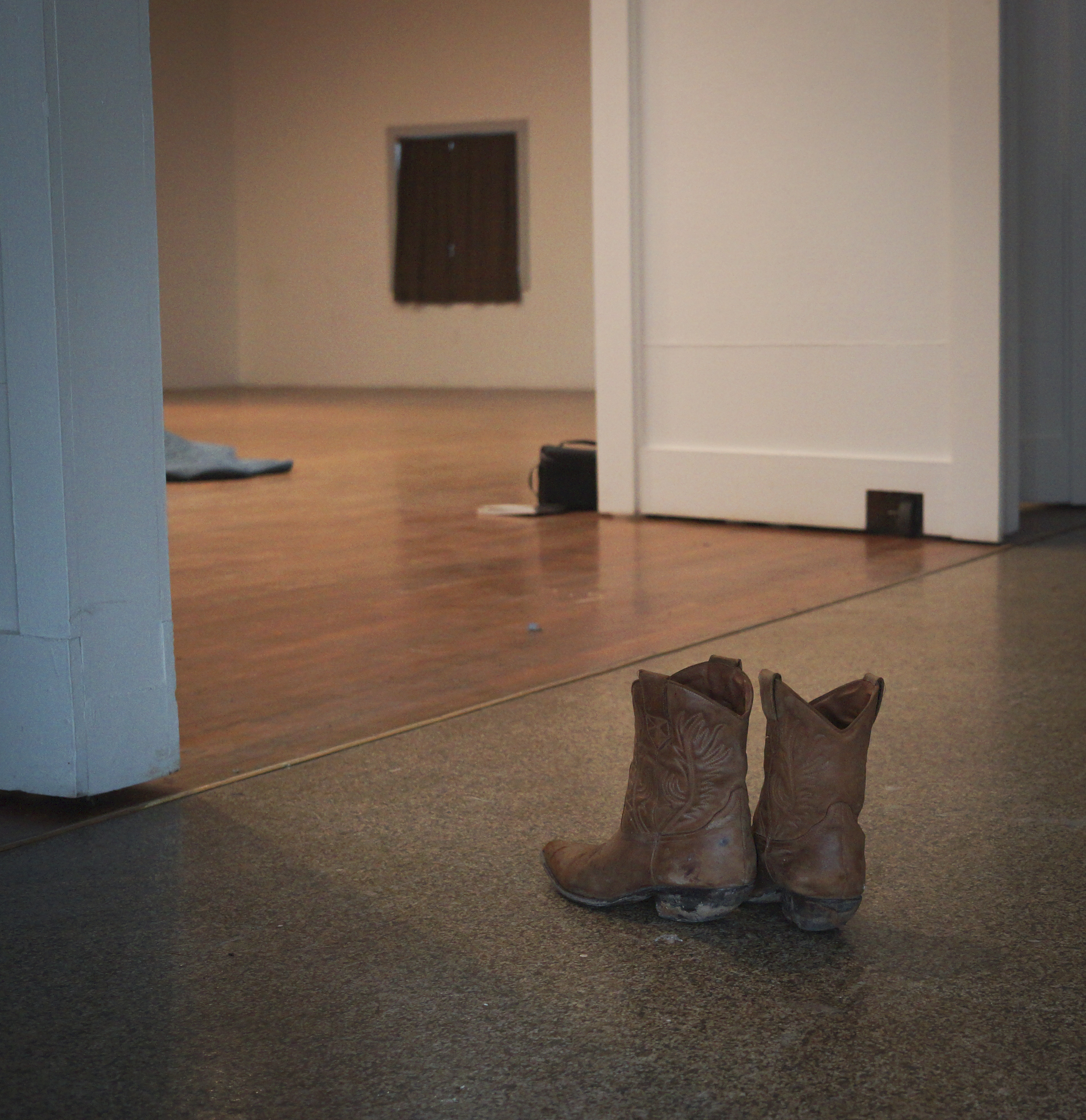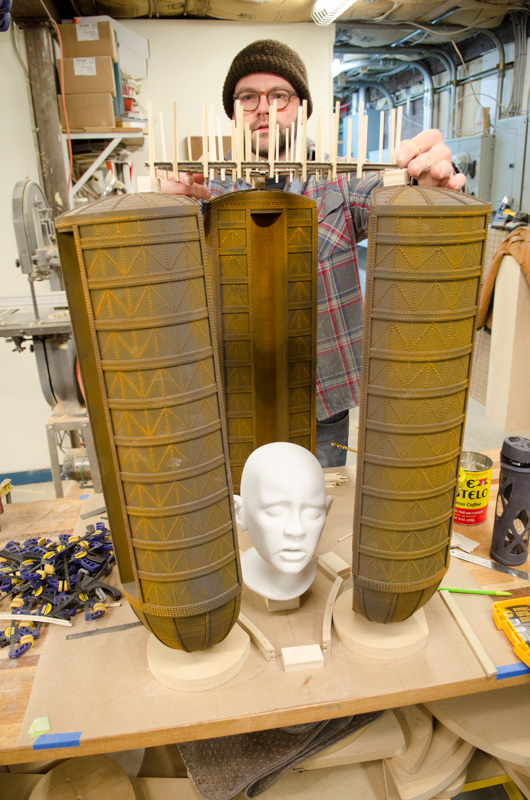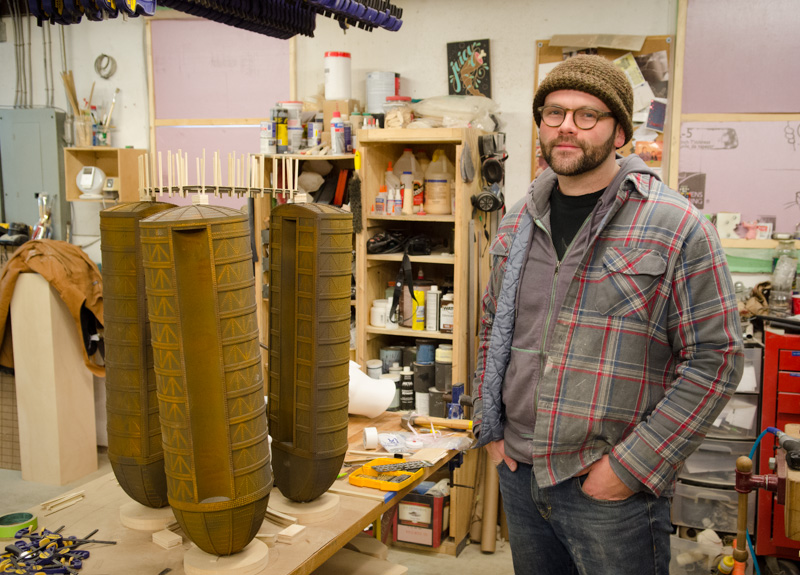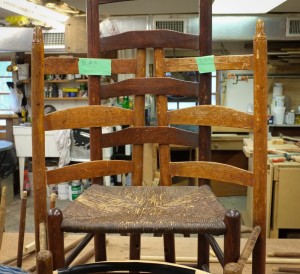
The chair. A form for one. A group of chairs: a human gathering, a table, a home. Gertrude Stein put it this way: Is there not much more joy in a table and more chairs and very likely roundness and a place to put them.
Tom Shields has been messing with wooden chairs—and our domestic contexts for them—for a while now. He collects, breaks, and alters–reworking flat-backs, ladder-backs, whatever chairs he can find by responding to and then rebuilding them into each other. (And away from each other, too.) Even the bank of discarded chairs that Tom keeps as raw material in his Penland studio (below) feels kind of irreverent:
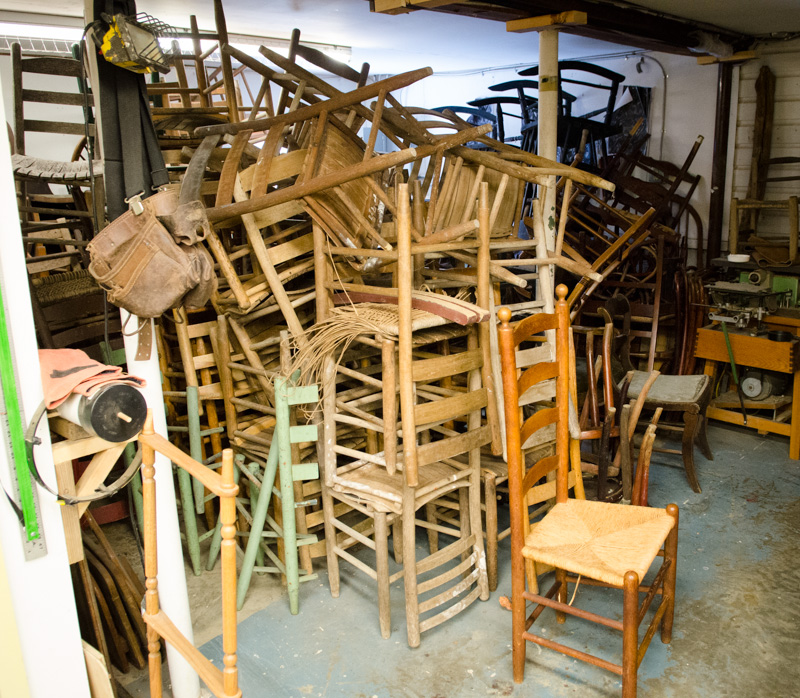
It’s not just chairs: irreverence fuels all of Tom’s sculptural “furniture” work. Take this recent commission, made from a group of original Heywood-Wakefield tables:
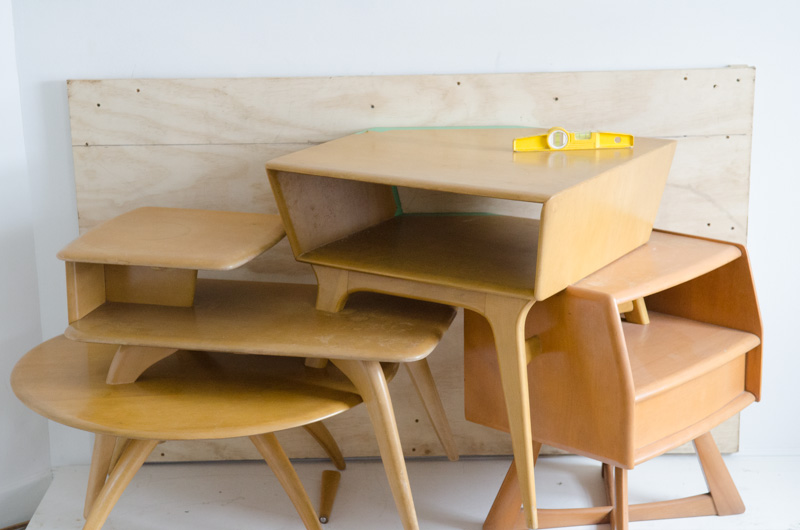
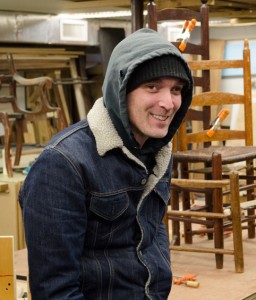
“Blasphemer,” says Tom, grinning as he tells us what one studio visitor called him after seeing the commission. If you’re a mid-century modern junkie, Tom might just be your nemesis. But looking closely, the tables retain their modern context. Form is interrupted and not shattered: the “futuristic” lines and planes are made fluid by Tom’s choices. It’s almost as if the atoms in the birch went haywire and some happy blasphemer came along and set the forms into each other, responding to the tables as potential parts of a larger functional sculpture.
In the irreverence in Tom Shields’s work, reverence. To put a finer point on it: in irreverence, reverent play. Gertrude Stein, another blasphemer, would’ve raised her glass. She said in 1935: A very important thing is not to make up your mind that you are any one thing.
Photographs by Robin Dreyer; writing by Elaine Bleakney
